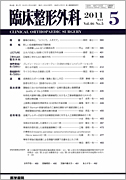1) Ang KK, Guan C, Chua KS, et al:A clinical study of motor imagery-based brain-computer interface for upper limb robotic rehabilitation. Conf Proc IEEE Eng Med Biol Soc:5981-5984, 2009
2) Buch E, Weber C, Cohen LG, et al:Think to move:a neuromagnetic brain-computer interface (BCI) system for chronic stroke. Stroke 39:910-917, 2008
3) Daly JJ, Wolpaw JR:Brain-computer interfaces in neurological rehabilitation. Lancet Neurol 7:1032-1043, 2008
4) Hashimoto Y, Ushiba J, Kimura A, et al:Change in brain activity through virtual reality-based brain-machine communication in a chronic tetraplegic subject with muscular dystrophy. BMC Neurosci 11:117, 2010
5) 里宇明元:BMIが拓くリハビリテーションの新たな可能性.認知リハビリテーション15:1-8,2010
6) Matsumoto J, Fujiwara T, Takahashi O, et al:Modulation of mu rhythm desynchronization during motor imagery by transcranial direct current stimulation. J Neuroeng Rehabil 7:27, 2010
7) 脳科学研究戦略推進プログラムhttp://brainprogram.mext.go.jp/
8) Pfurtscheller G, Guger C, Muller G, et al:Brain oscillations control hand orthosis in a tetraplegic. Neurosci Lett 292:211-214, 2000
9) Pfurtscheller G, Brunner C, Schlogl A, et al:Mu rhythm (de) synchronization and EEG single-trial classification of different motor imagery tasks. Neuroimage 31:153-159, 2006
10) Rockstroh B, Rockstroh B, Elbert T, et al:Cortical self-regulation in patients with epilepsies. Epilepsy Res 14:63-72, 1993
11) 新藤恵一郎,里宇明元:非侵襲型BMIの臨床応用.総合リハ38:1045-1050,2010
12) 牛場潤一:Brain-machine interface(BMI)の最前線.総合リハ37:719-724,2009

